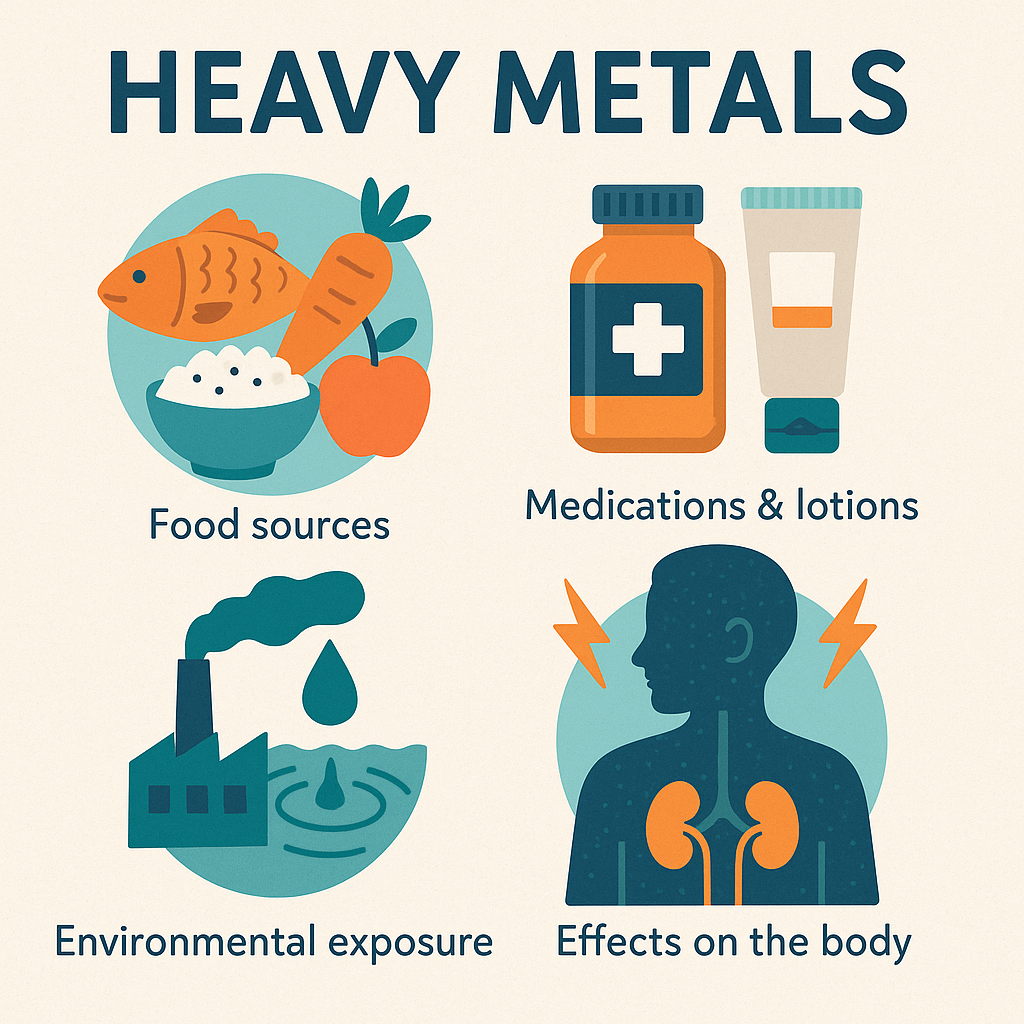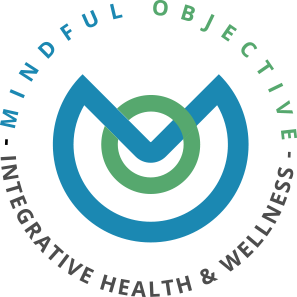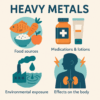
- 0 Comments
- Mindful Objective
Heavy Metals and Your Health: How to Protect Yourself Naturally
Heavy metals and health are more connected than most people realize. These toxic elements—found in food, water, products, and even medications—can build up in the body and silently disrupt energy, mood, immunity, and hormones. In today’s toxic world, understanding how to reduce exposure and support natural detoxification is essential for long-term wellness. At Mindful Objective, we take a whole-body approach to identifying and addressing hidden sources of heavy metal exposure. From functional lab testing to practical lifestyle changes, this guide—and Episode 20 of our podcast—will give you tools to protect your health naturally.
🎧 Listen to the full episode on your favorite platform
Find links to all podcast platforms at: mindfulobjective.com/podcasts
Or listen directly on:
What Are Heavy Metals?
Heavy metals are naturally occurring elements with high density and atomic weight.
Some, like iron and zinc, are essential to life in small amounts. But others—like lead, mercury, cadmium, arsenic, and aluminum—have no safe biological role.
Even at low levels, they can damage tissues, disrupt hormones, impair energy production, and weaken the immune system.
While heavy metals have always existed in nature, industrialization, agriculture, and modern manufacturing have increased human exposure to unprecedented levels. Today, it’s not a question of if you are exposed—but how much and how well your body handles it.
Common Sources of Heavy Metal Exposure
Understanding where heavy metals come from helps you make smarter daily choices without fear or overwhelm.
Some of the most common sources include:
Contaminated Food: Large fish like tuna and swordfish often carry high levels of mercury. Rice can contain arsenic. Leafy greens may absorb metals from soil.
Water: Aging infrastructure and industrial runoff can introduce lead and other metals into tap water supplies.
Personal Care Products: Deodorants often contain aluminum. Cosmetics like lipstick and eyeliner may have trace amounts of lead or cadmium.
Medications: Certain antacids and vaccines use aluminum-based compounds as stabilizers or adjuvants.
Household Items: Non-stick cookware, old paints, and even toys can be hidden sources.
The goal isn’t to eliminate all exposures (which is impossible) but to lower your total body burden by making safer choices where you can.
How Heavy Metals Affect the Body
Heavy metals don’t just pass harmlessly through the body. Instead, they accumulate in tissues—especially in the brain, liver, kidneys, and bones—and can cause damage slowly over time.
Some common impacts include:
Energy Disruption: Metals impair mitochondrial function, making it harder for your cells to produce energy.
Brain and Nervous System Damage: Lead and mercury are particularly harmful to the brain, leading to mood disorders, memory loss, and cognitive decline.
Hormone Disruption: Metals interfere with thyroid, adrenal, and sex hormone balance.
Immune Dysfunction: Chronic exposure weakens immune response and may contribute to autoimmune diseases.
Inflammation and Oxidative Stress: Heavy metals create oxidative stress that damages cells and accelerates aging.
Many symptoms that seem “unrelated” or “random”—like fatigue, brain fog, anxiety, gut issues, and stubborn weight gain—could actually be signs of a hidden heavy metal burden. That’s why understanding the relationship between heavy metals and health is so essential, especially if you’re seeking long-term solutions rather than short-term symptom management.
Why Testing Matters
Symptoms alone don’t always point clearly to heavy metal toxicity. Heavy metals and health is important to know about.
That’s why at Mindful Objective, we emphasize functional lab testing to guide real healing—not just guessing.
Two key tests are:
Hair Tissue Mineral Analysis (HTMA): Measures stored minerals and heavy metals over the past several months.
Urine Heavy Metal Testing (Post-Chelation Challenge): Assesses what heavy metals the body is actively trying to excrete.
Together, these tests create a comprehensive picture of both your exposure history and your detoxification capacity.
This information allows us to build personalized detox plans that are safe, gradual, and effective—avoiding the risks of aggressive or unmonitored detox strategies.
How to Lower Heavy Metal Exposure Naturally
You don’t have to overhaul your entire life.
Simple, consistent steps can dramatically lighten your toxic burden:
Use Water Filters: Install a high-quality drinking water filter certified to remove heavy metals.
Choose Smaller Fish: Opt for sardines, anchovies, or wild-caught salmon instead of tuna or swordfish.
Upgrade Personal Care: Switch to aluminum-free deodorant, mineral-based sunscreens, and clean makeup brands.
Eat Detox-Supportive Foods: Include sulfur-rich vegetables (onions, garlic, broccoli) and antioxidant-rich fruits daily.
Support Liver and Kidneys: Stay hydrated, minimize alcohol, and consider liver-supportive herbs like milk thistle.
Progress, not perfection, is the goal. Look at heavy metals and health, and know, even 70–80% cleaner choices most of the time can shift your health in major ways over months and years.
Why This Matters More Than Ever
In today’s world, we’re exposed to more environmental toxins than ever before—and heavy metals are a major piece of that puzzle. Ignoring them doesn’t make them go away. But awareness plus small, strategic changes can dramatically improve your resilience, energy, mood, and long-term health outcomes.
If you’ve been feeling “off” without clear answers—or simply want to get ahead of hidden threats to your well-being—this is an area worth addressing.
Final Thoughts: Take the Next Step
Healing from heavy metal toxicity isn’t about fear or extreme detoxes. It’s about awareness, smart action, and giving your body the support it needs to heal naturally. When it comes to heavy metals and health, clarity through testing and lifestyle changes creates the foundation for true, lasting wellness.
If you’re curious about where your health stands—or want to learn how functional testing can give you real answers—make sure to listen to Episode 20 of Mindful Objective. In this episode, we dive even deeper into heavy metals, how they impact the body, and what real, sustainable healing looks like from an integrative health perspective.
Your body wants to heal. Let’s work with it, not against it.
🎧 Listen to Episode 20 now on your favorite podcast platform.





